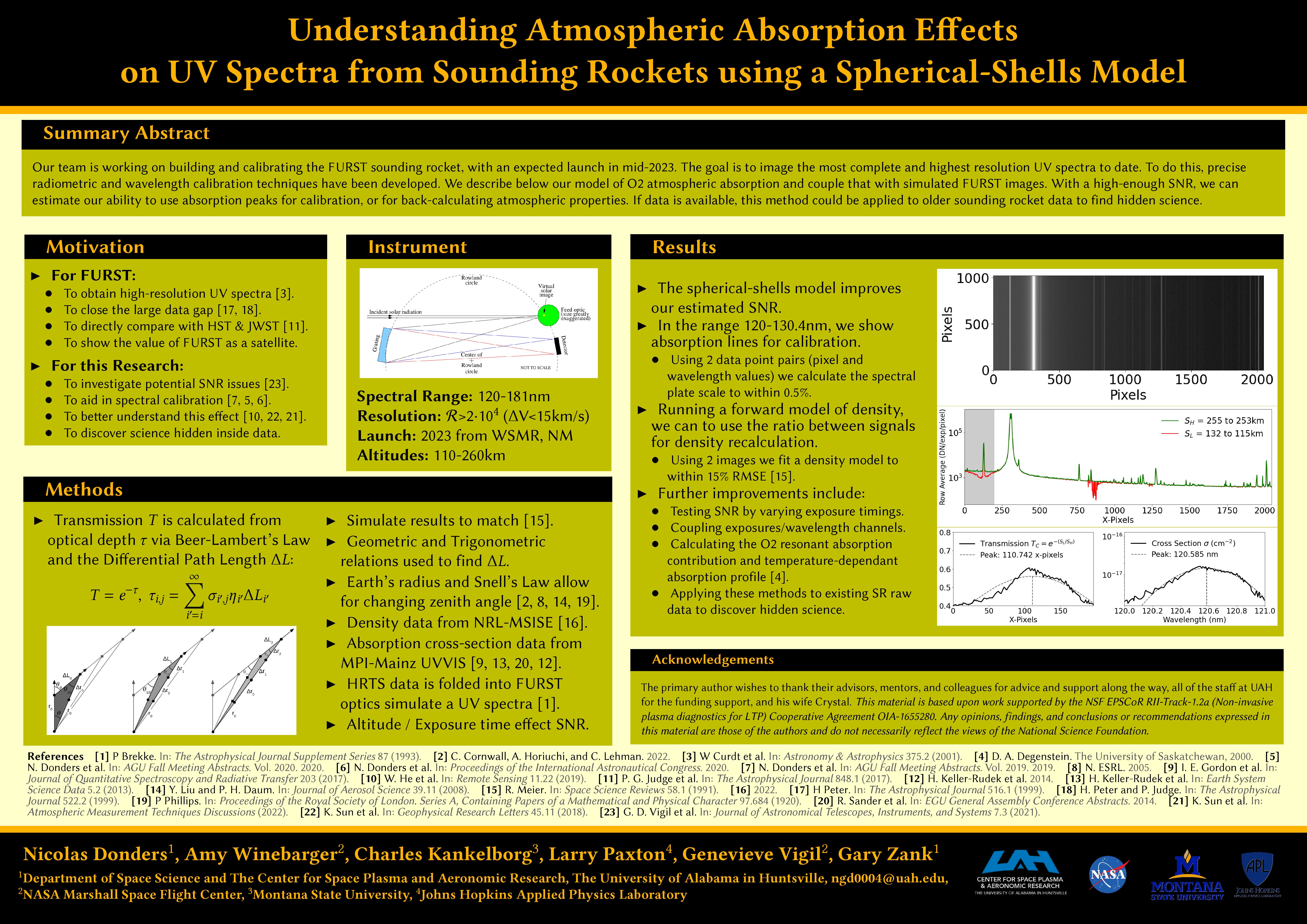Authors: Nicolas Donders (The University of Alabama in Huntsville, Department of Space Science and The Center for Space Plasma and Aeronomic Research), Amy Winebarger (NASA Marshall Space Flight Center), Charles Kankelborg (Montana State University), Larry Paxton (Johns Hopkins Applied Physics Laboratory), Genevieve Vigil (NASA Marshall Space Flight Center), Gary Zank (The University of Alabama in Huntsville, Department of Space Science and The Center for Space Plasma and Aeronomic Research)
In preparation for a paper describing in-flight wavelength calibration of sounding rockets by utilizing Earth’s thermospheric properties, we present our latest model for atmospheric absorption of solar ultraviolet (UV) radiation. Building and calibration of the Full-sun Ultraviolet Rocket Spectrograph (FURST) are currently underway. To obtain the highest resolution (R>20,000) and most complete spectra (120-181nm) in this range, we have been developing precise radiometric and wavelength calibration techniques. For this poster presentation, we use Quiet-Sun data from the High-Resolution Telescope and Spectrograph (HRTS) to simulate a noisy camera image from FURST at flight altitudes (~110-260km). Secondly, we build up an atmospheric absorption model for O2 by taking into account several factors such as Earth’s curvature, optical refraction, models for density and temperature, and laboratory measurements of the absorption cross-section of O2. Putting these all together gives an idea of the Signal to Noise Ratio (SNR) that the FURST camera may see and inform whether or not we can use absorption peaks as calibration points. Moreover, if a particular set of sounding rocket images have a high enough SNR, it may be possible to calculate atmospheric properties hidden in old data. The potential of finding in-situ measurements of density fluctuations is an exciting prospect, especially considering that this altitude can only be probed at such high cadence by sounding rockets. FURST is an outstanding new mission concept with a primary motivation to directly compare our sun to other stars through the Hubble Space Telescope (HST) and the upcoming James Webb Space Telescope (JWST). With the theoretical ability to perform spectroscopy on the sun-as-a-star with a ~3km/s Doppler-shift resolution, the instrument may also apply to exoplanet atmospheric spectroscopy. We are looking forward to a launch in the middle of 2023. Some desired improvements include a need for better temperature-dependent UV cross-section data sets. We would also like to begin accounting for resonant absorption of O2 and testing the code with sounding rocket data from previous missions.


